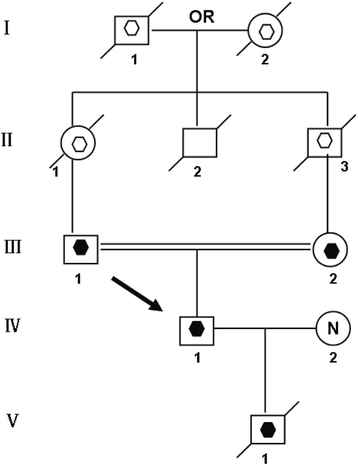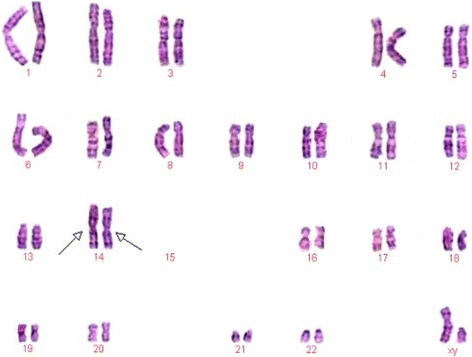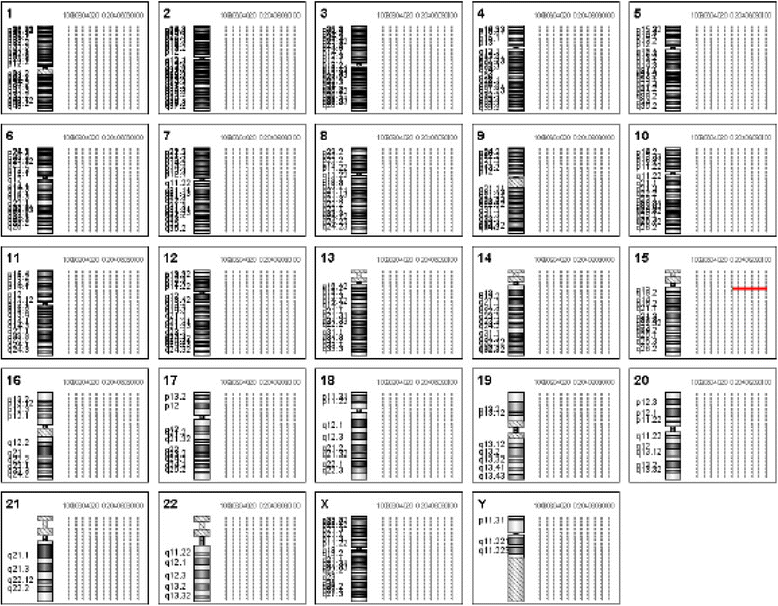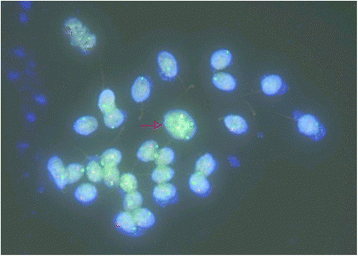A family with Robertsonian translocation: a potential mechanism of speciation in humans
- PMID: 27330563
- PMCID: PMC4912789
- DOI: 10.1186/s13039-016-0255-7
A family with Robertsonian translocation: a potential mechanism of speciation in humans
Abstract
Background: Robertsonian translocations occur in approximately one in every 1000 newborns. Although most Robertsonian translocation carriers are healthy and have a normal lifespan, they are at increased risk of spontaneous abortions and risk of producing unbalanced gametes and, therefore unbalanced offspring. Here we reported a previously undescribed Robertsonian translocation.
Case presentation: We identified three Robertsonian translocation carriers in this family. Two were heterozygous translocation carriers of 45,XX or XY,der(14;15)(q10;q10) and their son was a homozygous translocation carrier of a 44,XY,der(14;15)(q10;q10), der(14;15)(q10;q10) karyotype. Chromosomal analysis of sperm showed 99.7 % of sperm from the homozygous translocation carrier were normal/balanced while only 79.9 % of sperm from the heterozygous translocation carrier were normal/balanced. There was a significantly higher frequency of aneuploidy for sex chromosome in the heterozygous translocation carrier.
Conclusions: The reproductive fitness of Robertsonian translocation carriers is reduced. Robertsonian translocation homozygosity can be a potential speciation in humans with 44 chromosomes.
Keywords: Chromosome karyotype; Evolution; FISH; Robertsonian translocation homozygosity; aCGH.
Figures




References
-
- Cassuto NG, Le Foll N, Chantot-Bastaraud S, Balet R, Bouret D, Rouen A, et al. Sperm fluorescence in situ hybridization study in nine men carrying a Robertsonian or a reciprocal translocation: relationship between segregation modes and high-magnification sperm morphology examination. Fertil Steri. 2011;96:826–832. doi: 10.1016/j.fertnstert.2011.07.1143. - DOI - PubMed
-
- ACOG Committee Opinion No. 446: array comparative genomic hybridization in prenatal diagnosis. Obstet Gynecol. 2009;114(5):1161–3. - PubMed
Publication types
LinkOut - more resources
Full Text Sources
Other Literature Sources

